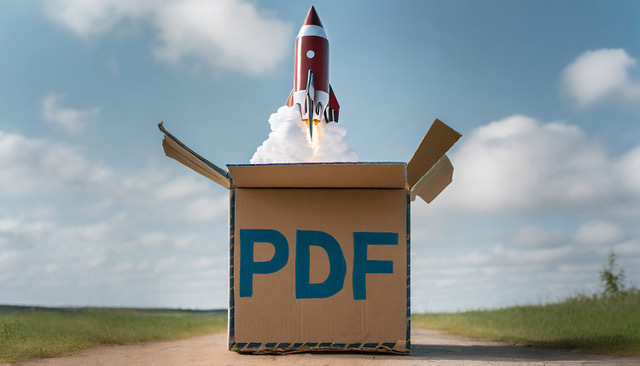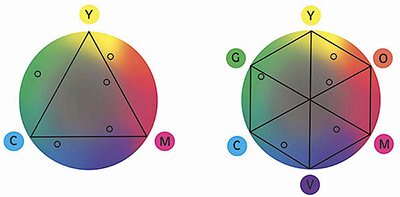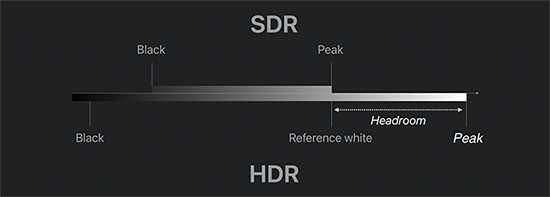
On October 17, 2023 the future of PDF began at a Symposium in San Francisco. The PDF Association had invited to evaluate and discuss possible extensions to the PDF format, all of which could in one way or the other break existing PDF processors. In this blog I want to look at a few of these technologies.
PDF today
The PDF Association has by now achieved significant improvements for its format: Since 2023 the specification is freely available (thanks to sponsors). In addition, this specification is probably the most consistent PDF spec that we ever had. That is thanks to a PDF Association working group that discusses and resolves all issues raised within or outside the group. All resolutions can be easily loaded into the spec via a comment file (XFDF), so that they are immediately available to every developer who needs them.
Now that we have this stable foundation, it makes sense to look at technologies that we have so far not considered for integration because they would break the format. The first question will then be, whether these technologies are worth breaking PDF. During the Symposium short presentations by technical experts were followed by discussions to find answers to this question.
Below I will introduce you to a few of the discussed technologies. I will also try to look at them from the print PDF point of view. In any case they are all interesting technologies for everybody in graphic arts.
N-color

N-color is used to enlarge the CMYK print color space, e.g., by adding orange, violet and green to CMYKOVG. In addition to this commonly used color space, especially in packaging and label printing the artwork often uses custom colorants. If you want to use them as process colors, i.e., to rasterize and mix them, you also need support for N-color.
ICC profiles are used to specify colors in a device independent way and that is what you would want to do with N-color too. Luckily N-color ICC profiles have been specified long time ago in 2003. In PDF you may already use them - but only as destination profiles in Output Intents (specified in PDF/X-5n and PDF/X-6n). However, PDF has broader support for ICC profiles: You can have them as source profiles and also as blend color spaces - where N-color ICC profiles cannot be used as of today. If you want to e.g., convert from an N-color object to your softproof monitor, or if you combine N-color objects using transparency there is no way to do so in PDF.
To change that you would not have to invent new objects in the PDF format, you would "just" have to extend the existing ICC color space objects. But at least one devil is in the details of transparency.
iccMAX

N-color ICC profiles as specified in 2003 are limited to 15 colorants; this limitation does not exist in the most recent version of ICC profiles, iccMAX (ISO 20677). But iccMax is much more and therefore it was a topic of its own at the event. In fact, it is a framework for various color management possibilities. ICS (Interoperability Conformance Specification) documents are used to define limited subsets for specific workflows. For example, iccMAX allows spectrally based profile connection spaces (PCS), extends the sets of possible transforms and more.
Since iccMAX is very broad and more a container for various options than a single technology, support for it in PDF will require to specify how these options are used in PDF under what circumstances. This could be done in the form of an "iccMAX in PDF" ICS.
Currently, iccMAX is under some rework, mostly to better align with the probably biggest new thing: HDR. HDR?
HDR (High Dynamic Range)
In print we usually deal with subtractive color spaces on opaque substrates. That comes not only with a relatively small color gamut, it also has limitations in luminosity. Movies are - other than PDF - always viewed on self-illuminating devices (and never printed). It makes a lot of sense to take full advantage of the capabilities of these devices and that is why almost all movies today use HDR with wider gamut in lights and dark.

But the gamut of digital output devices is not always the same which applies to color as well as to luminosity. The main topic of much HDR related work therefore is how to get from HDR in an image to the HDR of a device or "down to" SDR (Standard Dynamic Range).
(If you want to learn more about HDR you will find lots of information in the internet, e.g., this article).
But HDR is not limited to movies, it is just more commonly used there. It obviously makes sense for still images too.
Introducing HDR into PDF is by no means straightforward. HDR can be encoded in different ways and you would have to decide which one you want to support. In PDF, you have no control over the output device which has to be taken into account, so PDF will have to make clear how an HDR object has to be adjusted if needed. You may want to have a standardized "true" rendition that can be output on all devices, which means that in this mode you would limit the capabilities of a more powerful device.
Having a defined route from HDR to SDR is obviously the most important requirement for the print industry (with one possible exception of back light print). But if you would want to support this, many additional questions will have to be answered...
Colored fonts (Emoji)
Many texts are using emoji characters. Many of the emoji characters are covered by Unicode. That allows you to copy emoji text from one document into another 😊.
Unfortunately, they are not well supported in PDF 😕. What is usually done is to convert the emoji font into a Type 3 font, a specialty of PDF. But that means that you have to convert all painting instructions into PDF syntax and usually you will lose the Unicode information, i.e., the ability to copy the emoji out of the PDF.
In print PDF you will have to answer color related questions. An emoji font will only provide RGB color. You might want to define a default ICC profile (sRGB?) to be used for conversion into the respective print color space.
More aces

Various other features were discussed: I mentioned colored (emoji) fonts; this feature is part of the current Open Type font format specification. This font specification has other features that could be considered for integration into PDF. One of these is variable fonts. These fonts can be adjusted by the user, e.g. to appear wider or bolder. Here you can find more information.

Many newer fonts are already variable and even if you would not want to make text and fonts in PDF adjustable, it should be evaluated how a document that is using a variable font can best be converted into PDF without the need to change the font format altogether.
Also important are more effective compression algorithms (for PDF syntax): Small file size was always one of the big features of PDF - and e.g. for (online) print definitely important. Then we discussed new image codecs - which might also support HDR - and even animations.
I do not want to mention everything, rather I want to talk about:
What comes next?
Nothing has been decided yet, neither which features are the most important ones, nor whether the PDF format will be changed and if so in what ways. In my opinion at least the ones mentioned above would fit well into the PDF world. For sure evaluation will go on, for sure nothing will change in short term.
Now priorities will be defined, and technical working groups will be set up to further work on concepts and specifications. After that, results will be brought together to decide how to then change the format. Some of the features might not need to change the PDF specification at all, instead they could be introduced via an extension.
If you are interested in the future of PDF you should consider joining the team. Work will happen at the PDF Association, the "home of the PDF industry"; let me know if you do not know how to access.



